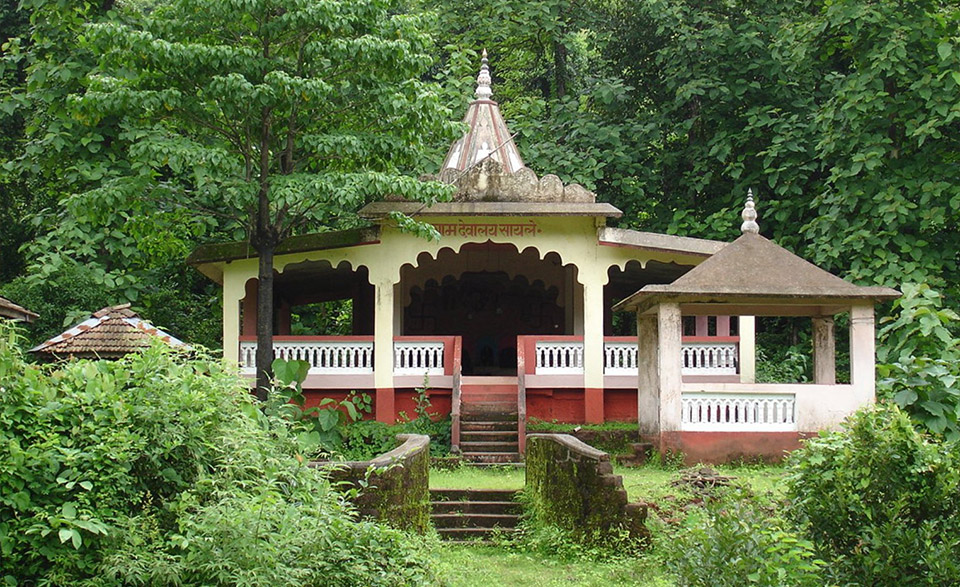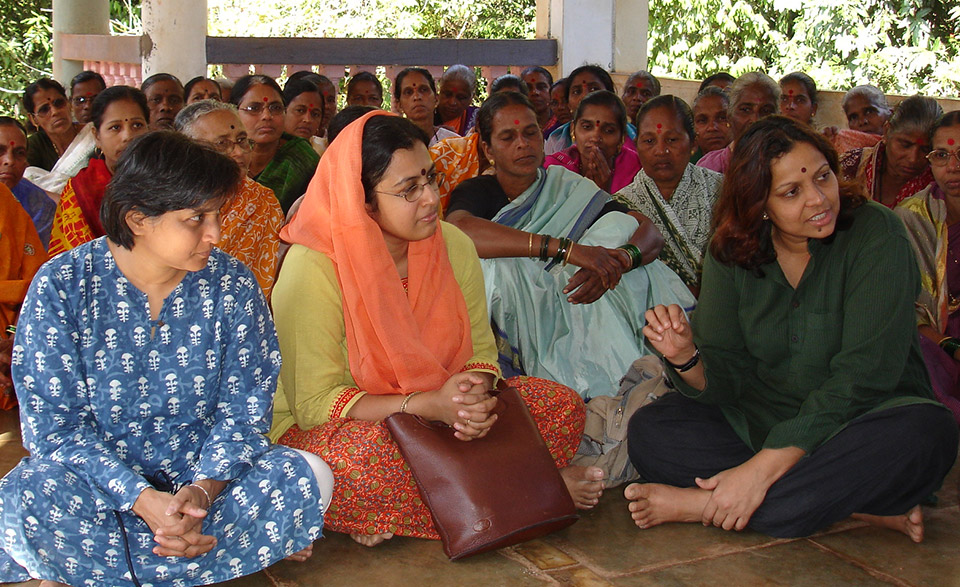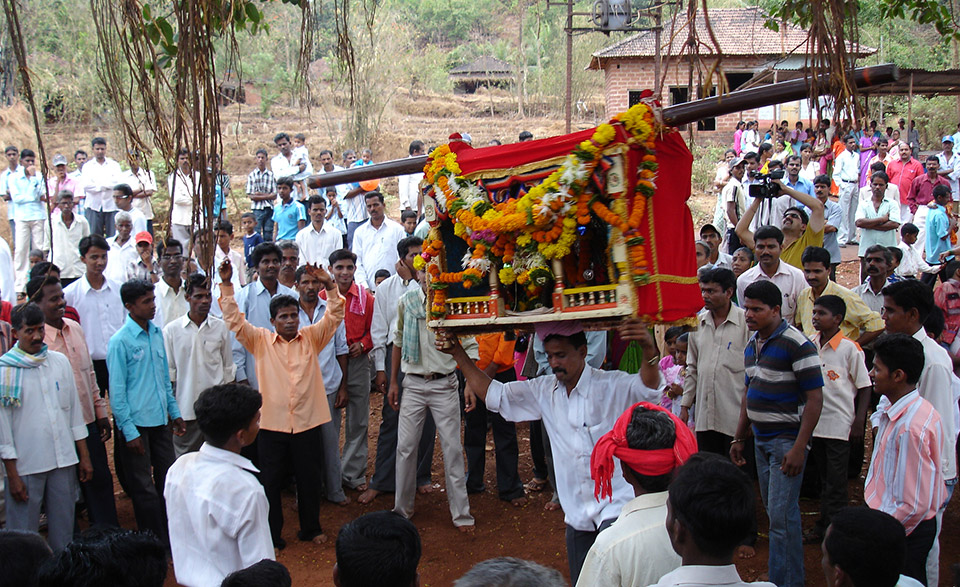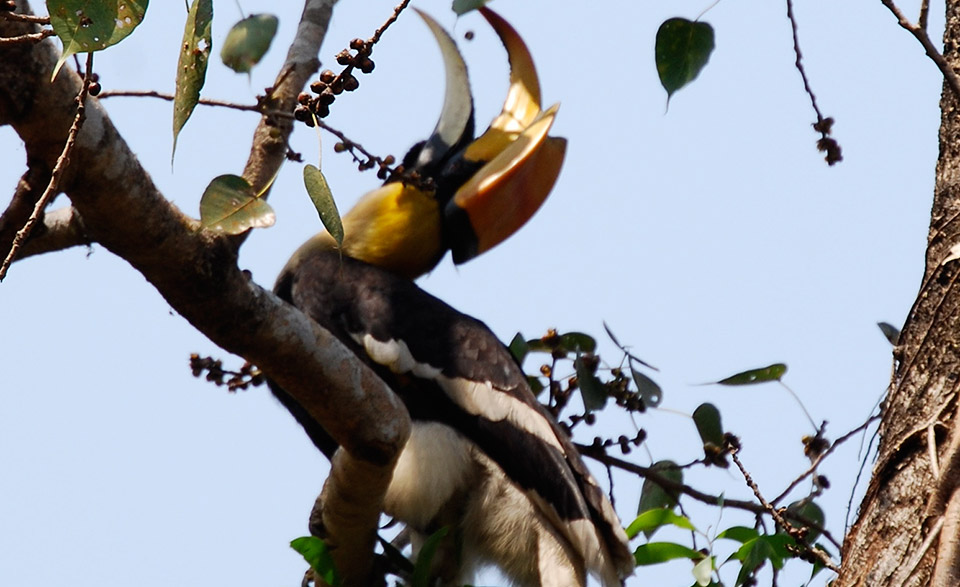Тхе Нортх Вестерн Гхатс Индије у држави Махараштра еко-регион формирања глобалног биодиверзитета хотспот. Висок ниво биодиверзитета региона допуњена је велика разноликост у локалним традицијама у региону. Скоро свако село у Сахаидри-Конкан региону има барем један свети гај са површином у распону од само неколико до неколико стотина хектара. Сацред лугови су преживели много стотина година, и данас делују као резервоара биодиверзитета уточиште многих биљних и животињских врста, као закрпе мрежу релативно неометано дивљачи.
Тхреатенед.
Претње
Претње свете гајеве потичу углавном из акултурације и глобализације. Мали свети лугови се често сматра малим занемарљивим закрпе шума који отежавају рад развоја. Многи свети лугови су уништени, и само вештачких храмови су сачувани. Примери разлога зашто су ови лугови уклоњени су задирање, изградња путева, пашњак, Изградња брана и канала и урбанизација. Одлуке да се мењају или уклоне одређене гај често долазе из околних села у којима повећана западни утицаји изазивају слабљење верских уверења која се шири у целом региону.
Визија
Регион је вероватно да ће имати користи од одговарајућег облика сарадње управљања светих шумарцима, локалних старатеље, као и других регионалних актера. Најперспективнија начин да се то постигне јесте поновно успостављање културних норми и оснаживању старатеља, локалних људи и традиционалне органима управљања. Дугорочни рад је важно да се створи чврсте савезе између различитих странака. Континуирана финансијска подршка је потребна заједно са јаким текућим олакшавање процеса укључених. То би могао да буде ефикасно средство за преношење светих шумарцима и њиховом значају биоцултурал будућим генерацијама.
Акција
АЕРФ је посебно радио на смањењу скалирања и репликације дугорочног управљања светим групама у заједници у различитим селима. Они су покушали да оживе традиционалне приступе природи прикупљањем локалног свести и развијањем подстицаја за управљање. Они су окупили актере на нивоу блока и округа.
Политика и право
Правно власништво над Грове је тренутно са државним одељењем о приходима.
Заштита светих група у региону не може да користи исти правни систем јер је за заштиту шума јер су правила за управљање различитом. У неким светим рукавима, Ограничена је ограничена додатак вађења за одређене шумске производе који не дрва. Правила и прописи које су прети нису записани, и понекад су уплетени за краткорочне користи.
Старатељи
Традиционална пракса очувања Такве свете шуме важна су компонента пејзажа у три округа Северна Вестерн ГАТС Махарасхтра Стате. Гровес је углавном у власништву сељана који су још увек у стању да преживе на својим земљама без да развијају своје свете груде. Управљање светом Грове-ом, укључујући верске функције и заштиту надгледа и надгледа групу сеоских старјешине. Културни значај је висок, и већина фестивала заједнице прославља се у храму смештеном у светом Гровеу. Неке од Гровес такође функционишу као гробље и крематоријуми и неки су оборени духова и божанстава. Осим воде, Људи не користе никакве ресурсе од ових група као што се ради у другим регионима у Индији.
Коалиција
Примењена основа за истраживање животне средине (Аеродром) ради на очувању света громова у северним западним гавама 15 године. У блоку сангамесхвар-а, АЕРФ је оживео традицију светих громова и укључивао је локалне људе у планирању, као и имплементацију за дугорочно очување светих громова.
Конзерваторски алати
Садржавање је једно од важних почетних бодова, олакшавање међусобног разумевања између странака. Организоване су сесије заинтересованих страна, Стварање различитих група ентузијастично и знатижељно о светим групама. Медији играју важну улогу у изградњи консензуса и свести о питањима заштите животне средине, Али могли би да разговарају о више тема о светим групама. АЕРФ стимулише локалне заједнице да оживе своје древне традиције кроз партиципативни рад. Користили су локалне традиционалне митове, плесати, Песма и церемонија да развију заједничко разумевање космовизије сељана, Враћање га где је било потребно да подржи одржавање светих громова. Додатно, Они чине залихе биолошке разноликости да открију тежину ситуације.
"Одлуке као што су тражење дозволе за коришћење светих ресурса за село добробит се углавном узимају у храму".
- Арцхана Годболе, Директор примењене основе истраживања животне средине.
- Бодболе, Сарнаик, Убрзо, (2010) Очување сакралних громова заснованих на култури: Искуства из Северних западних гатака, Индија, у Версцхуурен, Дивљи, МцНеели и Овиједо, Свето природних локација: Очување природе и културе, Земља скенирања, Лондон.
- Примењена основа за истраживање животне средине у Пуне, Индија: ввв.аерфиндиа.орг








